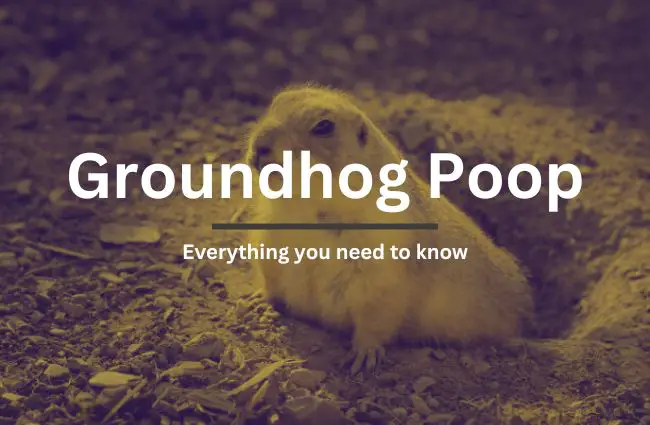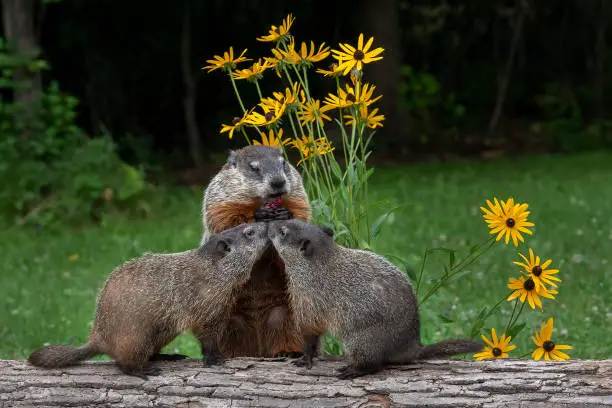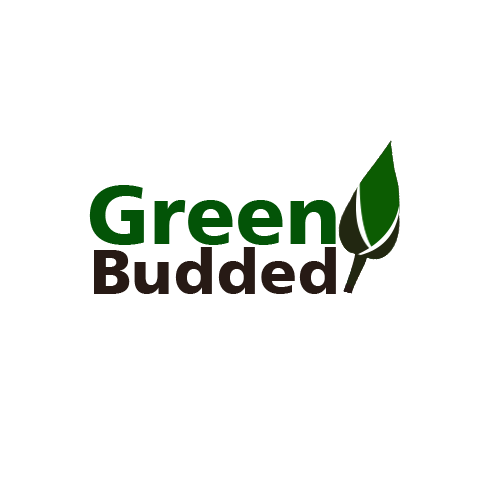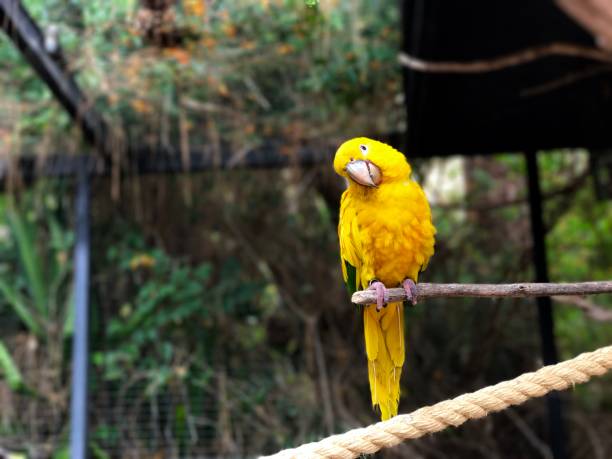Helpful Guides on each Category

Groundhog poop, otherwise called scat, has a unique appearance that can help you easily tell what they are.
Ever enjoyed a picnic in the park, only to be rudely interrupted by a rogue pellet bouncing off your picnic basket? Or perhaps you’ve toiled hours cultivating your prize-winning petunias, only to discover them mysteriously wilting, courtesy of a nocturnal gardener with questionable hygiene.
If these scenarios ring a bell, then congratulations, you’ve encountered the reality of groundhog poop.
Did you know groundhogs have designated bathroom tunnels? We certainly will discuss all of that so read on!
How does Groundhog’s Environment affect their Poop?

Groundhogs, also known as woodchucks, are native to North America and can be found in various regions across the continent, including Canada, the United States, and Alaska. They primarily inhabit open areas such as fields, meadows, woodlands, and the edges of forests.
Groundhogs are burrowing animals that create complex underground systems called burrows. Groundhogs have extensive and intricate burrow networks, which can have multiple entrances and chambers.
In terms of their environment affecting their poop, groundhogs typically defecate within their burrow systems. They have designated areas, known as latrines, where they deposit their faeces. These latrines are often located in specific chambers or tunnels within the burrow.
The groundhog’s burrow environment impacts their faeces in a few ways. First, by defecating in designated latrine areas, groundhogs can keep their living spaces cleaner and reduce the risk of disease transmission within their burrows.
Second, the organic material from their faeces can contribute to the nutrient cycle within the burrow ecosystem, aiding in the decomposition of plant matter and supporting the growth of microorganisms.
What do Groundhogs Eat and how does that Influence their Scat?
Groundhogs, or woodchucks, are herbivorous animals with a diet primarily consisting of plant material. They eat a variety of vegetation, including grasses, leaves, flowers, fruits, and bark. Their diet can vary depending on the availability of food in their habitat and the season.
The food that groundhogs consume directly influences the composition of their droppings. Since they mainly eat plants, their droppings consist of undigested plant matter. Groundhog droppings are typically cylindrical or pellet-shaped and can range in colour from brown to green, depending on the freshness of the faeces and the specific plants they have been eating.
The high-fibre content of the groundhog’s vegetarian diet affects the texture and consistency of their droppings. The plant fibres pass through their digestive system, and the resulting faeces are usually dry and relatively firm.
How to get Groundhog Poop?
Groundhogs are special animals with interesting behaviours. They live underground in tunnels and can be tricky to find or catch. But there’s a surprising way to attract and catch them: using their poop!
Groundhogs have a habit of smelling the waste of their kind. It’s not clear why they do this, but it’s helpful if you want to get rid of these pesky creatures from your garden. By collecting groundhog poop and placing it in your garden, you can lure them out into the open.
Getting hold of the poop may be a challenge, though. You might need to catch the first groundhog to get its droppings if you can’t find them around. Once you have the poop, simply place it in your garden and set up a trap to catch the groundhog.
It’s fascinating how something as unusual as poop can play a role in dealing with these troublemakers.
Read Also: 23 Animals that look like Beavers but are not! (Pictures)
How to Identify Groundhog poop: What do groundhog droppings look like?

Shape and size:
- Cylindrical/oval: Groundhog droppings are typically elongated and somewhat rounded at the ends, like small oblong pellets. Unlike perfectly round rabbit droppings, groundhog droppings have a more defined shape.
- Size: They range from 1/2 to 3/4 inches in length and 1/4 to 3/8 inches in diameter. This makes them larger than rabbit or squirrel droppings, but smaller than deer pellets.
Colour:
- Dark brown to black: This is the most common colour, but the exact shade can vary depending on the groundhog’s diet.
Other characteristics:
- Smooth and shiny: Groundhog droppings usually have a smooth, almost polished surface due to their diet of vegetation.
- Clustered: You might find several droppings together, especially near their burrows, foraging paths, or gardens.
How Big Are Groundhog Droppings?
Groundhog droppings, also known as scat, are typically cylindrical or pellet-shaped. The size of their droppings can vary depending on factors such as the individual groundhog’s size, diet, and hydration levels.
On average, groundhog droppings are approximately 1 to 2 centimetres (0.4 to 0.8 inches) in length and about 0.5 centimetres (0.2 inches) in diameter. Although these dimensions are approximate and can vary.
The appearance and size of groundhog droppings can also change depending on the freshness of the faeces. Fresh droppings may have a darker colour and a slightly softer texture, while older droppings may appear lighter in colour and more dried out.
What Color Are Groundhog Droppings?
Groundhog droppings, or scat, can vary in colour depending on factors such as the groundhog’s diet and hydration levels.
Typically, groundhog droppings are brown, similar to the colour of soil. However, the shade of brown can vary from light to dark, depending on the specific food the groundhog has been eating.
If groundhogs have been consuming a diet rich in green vegetation, such as grasses or leaves, their droppings will have a slightly greenish tint. This is because of the chlorophyll present in the plants.
The colour of groundhog droppings changes as the faeces age and dry out. Fresh droppings appear darker in colour, while older droppings exposed to the elements fade and become lighter in colour.
What Shape Are Groundhog Droppings?
Groundhog droppings, also known as scat, typically have a cylindrical or pellet-shaped appearance. The exact shape can vary, but it is generally elongated with rounded ends.
The size of the droppings can range from about 1 to 2 centimetres (0.4 to 0.8 inches) in length, and the diameter is typically around 0.5 centimetres (0.2 inches). The shape and size of the droppings may also depend on the individual groundhog’s size, diet, and hydration levels.
While groundhog droppings are generally cylindrical or pellet-shaped, their texture can vary from relatively firm to slightly softer, depending on the freshness of the faeces.
If you come across cylindrical or pellet-shaped droppings in your surroundings, it could potentially indicate the presence of groundhogs in the area.
How much do groundhogs poop?
Groundhogs, like many animals, defecate regularly as part of their natural bodily functions. The amount of poop produced by a groundhog can vary depending on factors such as its size, diet, and overall health.
On average, a groundhog can produce several droppings per day. However, it’s difficult to provide an exact quantity as it can vary depending on individual factors and circumstances.
Groundhog poop, or scat, is typically not produced in large quantities like those of larger animals such as cows or horses. Instead, groundhogs tend to produce smaller amounts of droppings throughout the day consistently.
The frequency and amount of groundhog poop can be influenced by factors such as their diet, water intake, and metabolic rate. As herbivorous animals, groundhogs primarily eat plant material, which generally results in a smaller volume of waste compared to animals with a higher intake of food.
Uses of Groundhog Poop

1. Attracting other groundhogs
Believe it or not, groundhogs are curious about the scent of other individuals’ waste. This can be used to your advantage in two ways:
- Trapping: Placing some groundhog poop in a live trap can lure curious groundhogs closer, making them more likely to enter. This can be helpful if you’re trying to humanely relocate groundhogs causing problems in your garden.
- Tracking: Trained tracking dogs can use the scent of groundhog poop to locate their burrows or dens. This can be helpful for wildlife biologists studying groundhog populations or pest control professionals trying to manage groundhog problems.
2. Composting
While not as effective as other animal manure, groundhog poop can be added to compost piles in small quantities. It contains nutrients like nitrogen, phosphorus, and potassium that can benefit plant growth. However, it’s crucial to compost it properly for at least six months to eliminate any potential pathogens.
3. Soil Amendment
Similar to composting, groundhog poop can be used as a soil amendment in small amounts after proper composting. This can be helpful for gardens or flowerbeds, providing some nutrients and organic matter. However, it’s essential to avoid overusing it, as it can be too concentrated for some plants and potentially attract unwanted pests.
4. Indicator of Groundhog Activity:
Finding groundhog poop can be an indicator of their presence in your yard or garden. This can be helpful if you’re trying to determine whether you have a groundhog problem and need to take measures to deter or remove them.
5. Food to other wildlife
Since their poop does not decompose, they are particles of nut and other undigested food in groundhog poop that other animals and even themselves eat again to get the remaining nutrients.
6. Territorial markings
Groundhog poop is used by them to tell other animals of their territorial presence. The smell, and appearance of these send a message to other species to avoid trespassing.
Is Groundhog Poop Harmful?
Groundhog poop, like the faeces of many animals, can potentially carry certain risks and should be handled with caution. While it is not generally considered highly hazardous, there are some factors to consider:
- Parasites: Groundhog poop may contain parasites such as roundworms or tapeworms. These parasites can pose health risks if people come into direct contact with the faeces or if they accidentally ingest contaminated food or water.
- Tularemia: This bacterial disease is the most significant risk associated with groundhog poop. It can be contracted through direct contact with droppings, contaminated water or soil, or even bites from infected fleas or ticks. Symptoms include fever, chills, swollen lymph nodes, and skin ulcers. Tularemia can be serious if not treated promptly. Other bacterial risks are E. coli and Salmonella.
- Rabies: Although rare, groundhogs can carry rabies. However, rabies cannot be transmitted through contact with excrement. Only direct bites from an infected animal pose a risk.
- Allergic reactions: Some people may develop allergic reactions to groundhog droppings, causing skin irritation, respiratory problems, or eye discharge.
- Attracting other pests: Groundhog droppings can attract flies, mosquitoes, and other insects that can be nuisance pests or transmit diseases.
Where Are Groundhog Droppings Found?

Groundhog droppings, or scat, can be found in various locations, depending on the habits and behaviours of the groundhog population in a particular area. Here are some common places where groundhog droppings may be found:
- Near Burrow Entrances, Groundhogs often defecate at or near the entrance as a way to mark their territory.
- Along Trails or Runways
- Groundhogs sometimes have favoured spots for resting or sunning themselves. These areas may have droppings nearby as a result of their presence and activities.
- Groundhogs often designate specific areas within their burrows for waste. Finding droppings in open areas is less common.
- Gardens, meadows and flowerbeds as they love munching on vegetation.
Do groundhogs bury their poop?
Groundhogs do not bury their poop like some other animals do. Instead, they leave their droppings on the ground’s surface or near their burrow entrances.
Groundhogs are known to mark their territories by leaving droppings at specific locations, including the entrances of their burrows. By doing so, they communicate their presence to other groundhogs and potentially deter intruders.
While groundhogs do not bury their scat, they engage in other behaviours related to waste management. For instance, they create separate areas within their burrows for urination and defecation. By segregating waste within their underground dwellings, groundhogs help maintain a cleaner living space.
This doesn’t mean that groundhogs are neat animals, Their droppings can accumulate in certain areas over time. This can be observed near burrow entrances or along well-used trails and feeding areas.
Are Groundhogs smelly?
Groundhogs do not have a strong or distinctive odour associated with their natural scent. Compared to some other animals, such as skunks or certain rodents, groundhogs are not particularly known for emitting strong or unpleasant odours.
However, they may have a musky scent or odour associated with their dens or burrows. This odour is confined to their underground living spaces and is not noticeable in outdoor areas or when observing groundhogs in the wild.




